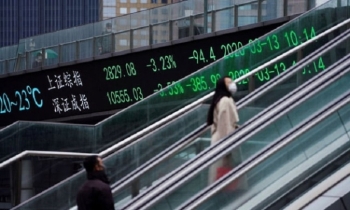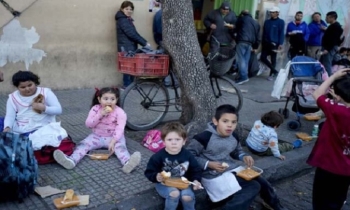Inflation rates do not reflect market prices due to base year: Economists
Asif Showkat Kallol || BusinessInsider

Graphics: Business Insider Bangladesh
A sudden pressure on the economy due to the Russia-Ukraine war and the ongoing onslaught of the Covid-19 pandemic has caused a surge in the inflation rate, eventually burdening the subsidy outlay of the government.
However, measuring inflation estimating fiscal 2005-06 as the base year instead of fiscal 2015-16 is not reflecting peoples’ true spending, economists said.
Finance ministry officials also admitted that the estimation of the Consumer Price Index or inflation with some fewer commodities has been earmarked for the base year 2005-06 fiscal. However, they said the ensuing 2022-23 fiscal year’s budget is being prepared considering the CPI of the 2015-16 fiscal base year.
The consumer price index (CPI) reflects the average change over time in the prices of a specified set of final commodities and services representing the market basket of a given group of consumers.
Economist and former finance ministry adviser to the caretaker government Dr AB Mirza Azizul Islam said there is definitely a mismatch between two different base years for calculating inflation while writing the next budget.
Inflation is being calculated on 2005-06 as the base year which is 15-year old and estimated with a few numbers of commodity baskets. If it is calculated on the 2015-16 base year, inflationary pressure for non-food commodity baskets would be much higher, he said.
Islam agreed with the government that discouraging imports of luxury products are a timely decision to restrict ‘imported inflation.
Centre for Policy Dialogue in its recommendations on the national budget said it will not be far-fetched to say that the official information on inflation does not capture the actual structure of spending of general consumers and tends to undermine the suffering of the lower and middle-income groups.
According to the Consumers Association of Bangladesh, in 2005, Kataribhog rice was priced at Tk 32 per kg, Miniket at Tk 24, Nazirshail at Tk 23, Aman Paijam at Tk 22 and Parija rice at Tk 19, respectively. The average price of this rice was estimated at Tk 24 per kilogram.
After 12 years, it is seen that BR-11 or BR-8 rice (coarse rice) was selling at Tk 43.80 per kg in 2017 and it was selling at Tk 55 per kg in 2021. The average price of coarse rice has increased by 105.23 percent in 2021 compared to the prices of 15 years ago.
Officials in the finance ministry said expenditure has increased on interest payments and salaries of government employees. Therefore, it was not possible to keep inflation at 5.4 percent as the Finance Minister intended. For the same reason, the cost of subsidies has also gone up due to the increase in the prices of some imported products.
Despite such a good intention, pronounced at the beginning of the year (in a normal environment), the budget has come under four-sided pressure at the end.
The inflation rate could not be kept as per the budget announcement which increased to 5.7 percent in the revised budget. Currently, the country’s general inflation rate has reached 6.22 percent.
An official of the macroeconomic wing of the finance division, said, “Our inflation rate is lower because of the CPI’s lower indices compared to the actual cost of living of the people.
“The major reason to depict a lower CPI is based on estimates considering prices of 2005-6 fiscal year. Had they estimated CPI based on the 2015-16 base year, the inflation would have been much higher” he said.
He also said that the finance division is preparing the next fiscal budget calculation 2015-16 as the base year which has been set some six months ago. It is time-consuming and hard work for BBS to change the base year, he added.
The subsidy and incentive outlay has increased by Tk 12,973 crore in the revised budget to Tk 53,852 crore, according to the finance ministry.
The war in Ukraine has led to the largest commodity price shock since the 1973 oil crisis, according to a new World Bank report, elevating prices for years to come. Energy prices rose 448% in the year to March, while prices for food and fertiliser rose by 84% and 222%, respectively.
Russia’s invasion of Ukraine in February has exacerbated pre-existing tensions in global supply chains. Energy and non-energy commodity prices had already risen by 81% and 33%, respectively, between 2020 and 2021, owing to the global economy’s strained recovery from Covid-19.
Before the war, the World Bank had expected 2022 to be a year of stabilisation, with energy prices rising just 2% and non-energy commodity prices falling by 2%. Now, the organisation fears that energy prices will increase by 51% over the course of this year, along with a 19% increase for other commodities. Prices for all major commodity groups bar timber and precious metals are expected to remain above pre-war forecasts until at least 2024.
























